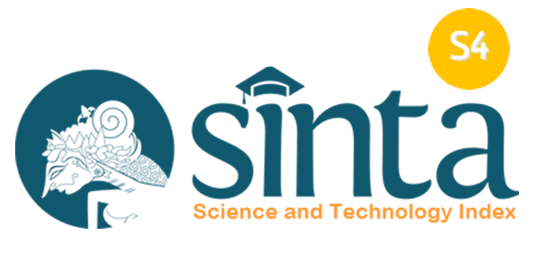Family-Sourced Early Intervention Programs to Optimize Communication Development of Children with Multiple Disabilities
Abstract
Communication is a fundamental skill that must be fulfilled for all humans, including individuals with multiple disabilities. With communication, individuals with multiple disabilities can interact and participate with the environment so that they are not isolated. This study aims to formulate a family-sourced early intervention program to optimize the communication development of students with multiple disabilities in accordance with children's needs, so that families can hopefully become a support system in supporting their children's communication development. This research uses research methodology design and development design and development research (D & DR), where in the first year researchers formulate programs based on needs in the field. The results showed that there are three family-sourced early intervention programs to optimize communication of individuals with multiple disabilities.
Keywords
Full Text:
PDFReferences
Arif Taboer, M., & Citra Ashri Maulidina, Mp. (2023). Pendidikan anak dengan disabilitas
majemuk.
Arthur-Kelly, M., Foreman, P., Bennett, D., & Pascoe, S. (2008). Interaction, inclusion, and students with profound and multiple disabilities: Towards an agenda for research and
practice. Journal of Research in Special Educational Needs, 8(3), 161–166.
Cass, H., Price, K., Reilly, S., Wisbeach, A., & Mcconachie, H. (n.d.). A model for the assessment and management of children with multiple disabilities.
Chadwick, D., Buell, S., & Goldbart, J. (2019). Approaches to communication assessment with
children and adults with profound intellectual and multiple disabilities. Journal of Applied Research in Intellectual Disabilities, 32(2), 336–358.
Downing, J. E. (2001a). Meeting the communication needs of students with severe and
multiple disabilities in general education classrooms. Exceptionality, 9(3), 147–156.
Downing, J. E. (2001b). Meeting the communication needs of students with severe and
multiple disabilities in general education classrooms. Exceptionality, 9(3), 147–156.
Epley, P. H., Summers, J. A., & Turnbull, A. P. (2011). Family outcomes of early intervention: Families’ perceptions of need, services, and outcomes. Journal of Early Intervention, 33(3), 201–219.
Gantini, G., Peyuluh, E., & Kota Bandung, A. (n.d.). Komunikasi bagi anak berkebutuhan
khusus. In Jurnal Bimbingan Penyuluhan Islam 4(1).
Hogg, J. (2001). Consistency, context, and confidence in judgements of affective communication in adults with profound intelectual and multiple disabilities. Journal Of Intelectuall Disability Research, 45, 18–30.
Holmqvist, E., Thunberg, G., & Peny Dahlstrand, M. (2018). Gaze-controlled communication
technology for children with severe multiple disabilities: Parents and professionals’
perception of gains, obstacles, and prerequisites. Assistive Technology, 30(4), 201–208.
Imas, M., & Aprilia, D. (2012). Interaksi dan komunikasi pada anak dengan hambatan
majemuk.
J. Ellis, T., & Levy, Y. (2010). A guide for novice researchers: design and development research methods. Proceedings of the 2010 InSITE Conference, 107–118.
Kaiser, A. P., & Roberts, M. Y. (2011). Advances in early communication and language
intervention. Journal of Early Intervention, 33(4), 298–309.
Norén, N., & Sigurd Pilesjö, M. (2016). Supporting a child with multiple disabilities to
participate in social interaction: The case of asking a question. Clinical Linguistics and
Phonetics, 30(10), 790–811.
Schweigert, P., & Rowland, C. (1992). Early communication and microtechnology:
instructional sequence and case studies of children with severe multiple disabilities.
Siegel-Causey, E., & Bashinski, S. M. (1997). Enhancing initial communication and
responsiveness of learners with multiple disabilities: A tri-focus framework for partners.
Focus on Autism and Other Developmental Disabilities, 12(2), 105–120.
steven peck. (2004). Communication made easier facilitating transitions for students with
multiple disabilities.
Susilowati, E., Mujiastuti, R., & Nurbaya Ambo, S. (2019). Stimulasi, deteksi dan intervensi dini tumbuh kembang (SDIDTK) anak pada posyandu kelurahan penggilingan jakarta timur. In Jurnal Pengabdian Masyarakat Teknik 1(2).
Sharon & Marry. (2016). Keys to educational success teaching students with multiple
disabilities. New York: AFB PRESS
Santrok, John (2013). Child development. Singapore: MCGraw Hill Company
DOI: https://doi.org/10.17509/jassi.v24i1.71216
Refbacks
- There are currently no refbacks.
Copyright (c) 2024 Universitas Pendidikan Indonesia

This work is licensed under a Creative Commons Attribution-ShareAlike 4.0 International License.




